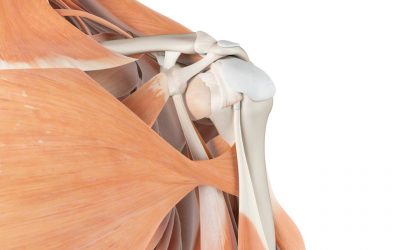Rotator cuffThe rotator cuff is a group of muscles and tendons that attach the shoulder blade to the upper arm b More surgery- what it is, how it’s performed and what to expect afterward.
What is rotator cuff surgery?
This surgical procedure is used to repair damage or tears to the rotator cuff muscles and tendons. It can be a life-changing surgery for those who have suffered from rotator cuff injuries for an extended period of time.
Rotator Cuff surgery is a major procedure and should only be performed when necessary.
When not to have rotator cuff surgery
If you have a rotator cuff tear, you may be wondering if surgery is the right option for you. There are a few things to consider before making the decision to move forward with surgery.
Age
One factor that may influence your decision is age. If you are over the age of 60, you may be less likely to have a successful surgery. This is because the tendons and muscles around the rotator cuff may have become weak due to age.
Activity Level
Another thing to consider is your activity level. If you lead a sedentary lifestyle, you may be able to get by without surgery. However, if you are active and participate in sports or other activities that require use of your arms, you may be more likely to need surgery.
Type of Tear
There are two main types of rotator cuff tears: partial and full-thickness. Partial tears are less serious and may not require surgery. Full-thickness tears, on the other hand, are more severe and often require surgery to repair.
Size of Tear
The size of the rotator cuff tear may also influence your decision to have surgery. Smaller tears may be able to heal on their own, while larger tears may require surgery.
Your doctor will also take into consideration your overall health and any other factors that may influence your ability to have a successful surgery.
The decision to have rotator cuff surgery is a personal one and should be made after careful consideration of all the facts. If you are still undecided, speak with your doctor about other options that may be available to you.
You can choose not to have rotator cuff surgery if the following treatments work:
- Anti-inflammatory medication
- Physical therapy
How is rotator cuff surgery performed?
Rotator cuff surgery is performed either as arthroscopic surgery, or as an open surgery. The type of surgery that is best for you will depend on the extent of your injury.
Arthroscopic surgery is a minimally invasive surgical procedure that uses small incisions and a camera to visualize and repair the damage. This type of surgery is often used for smaller tears.
Open surgery is a more invasive procedure that requires a larger incision. This type of surgery is often used for more severe tears.
Both these surgeries are performed when the patient is seated.
How long does rotator cuff surgery take?
The procedure itself lasts between 2 and 2.5 hours. Patients undergoing arthroscopic surgery are more likely to be discharged the same day. Following the surgery, patients are kept in the hospital for up to 2 hours to ensure no complications occur.
What to expect after rotator cuff surgery?
After rotator cuff surgery, you will likely have some pain and swelling. These symptoms are normal and should improve over time. Your doctor will give you specific instructions on how to care for your incisions and what activities you should avoid.
Most people are able to return to their normal activities within a few months. However, it may take up to a year for the full strength to return to your arm.
What not to do after rotator cuff surgery
There are a few things you should avoid doing after rotator cuff surgery:
- Lifting heavy objects
- Participating in contact sports
- Doing any activity that may put stress on your arm or shoulder
- Driving
- Reaching for things away from your body
These activities can put too much strain on your healing rotator cuff and delay your recovery. In some cases, this can cause re-injury. To avoid doing these activities, build a habit of putting objects you use regularly close to you, such as your phone. Before the surgery, you may benefit from re-arranging your home to make daily tasks as easy as possible.
How long after rotator cuff surgery can you drive?
You should avoid driving for at least 6 to 12 weeks after rotator cuff surgery. This is to allow your shoulder time to heal and to prevent any further injury. You will be advised by your doctor and physiotherapist when it is safe enough to drive. After the surgery, your arm should be kept close to your body, which you cannot do while driving.
Driving with one arm is dangerous as you do not have full control of the car. Additionally, you may have to react quickly to conditions on the road which could put immediate and destructive strain on your vulnerable shoulder.
How long to recover from rotator cuff surgery?
The recovery time from rotator cuff surgery will depend on the size of the tear.
Most people are able to return to their normal activities within a few months. However, it may take up to a year for the full strength to return to your arm.
In the first 6 to 12 weeks the tendon is healing to the bone, which is when your shoulder is most at risk of re-injury. You must follow your physiotherapy program closely and enthusiasm to ensure a full recovery. Your physiotherapist will guide you through mobility exercises, then shoulder strength exercises to recover the lost strength of your rotator cuff.
For small tears, recovery time can be 4 months. Large tears may require 6 months to full recovery.
What to expect 6 weeks after rotator cuff surgery?
6 weeks after rotator cuff surgery patients are often doing active range of motion exercises. These are exercises that lift the weight of the arm, with no additional weight. 6 weeks after surgery your tear is still healing, so gentle exercises without weight will start to build the strength of the connection of the tendon to the bone. You should accomplish full range of motion through passive range of motion exercises.
6 – 10 weeks after surgery your physiotherapist will work with you to increase the strength in your shoulder.
When can I return to work after rotator cuff surgery?
This will depend on the type of work you do. If your job is sedentary, you may be able to return to work within a few weeks. If your job is more physically demanding, you may need to take several months off to recover.
How to sleep after rotator cuff surgery
It is best to sleep on your back or in a recliner for the first few weeks after rotator cuff surgery. This will take the pressure off of your shoulder and allow it to heal. You may find that sleeping in a reclined position is more comfortable than lying flat on your back. You can use pillows to prop yourself up in bed or to support your arm while you sleep.
As well as sleeping positions, there are a range of things you can do to improve your sleep after surgery such as establishing a bedtime routine, avoiding caffeine from late afternoon, avoiding naps during the day, and establishing your bedroom as a place for sleep.
Check out our article on better sleep with a shoulder injury.
How to shower after rotator cuff surgery
You will need to take extra care when showering after rotator cuff surgery. Avoid getting the wound wet for the first 7 to 10 days, or until your stitches have been removed. After that, you can gently clean the area with soap and water. Avoid using a loofah or washcloth on the area as this could irritate the wound.
It is important to keep the wound clean and dry to prevent infection. You should also avoid using lotions or oils on the area as this could make the dressing slippery and increase your risk of falling.
If you have a plaster cast, you will need to keep it dry. You can cover the cast with a plastic bag when showering. If you have a removable splint, you should remove it before showering and avoid getting the splint wet.
You may find that bathing in a tub is more comfortable than showers for the first few weeks after surgery. You can use a kitchen sink or small plastic tub to bathe your upper body if you are unable to take a shower.
When should I see my doctor after rotator cuff surgery?
You will need to see your doctor for a follow-up appointment 7 to 10 days after surgery. At this appointment, your stitches will be removed and you will be able to discuss your recovery with your doctor.
How to tell if you are recovering effectively after rotator cuff surgery
There are a few things you can look for to gauge your recovery after rotator cuff surgery. You should start to see an improvement in your pain and range of motion within the first few weeks. Your physiotherapist will also give you specific exercises to do at home to improve your range of motion and strength.
It is important to track your range of movement and pain during recovery as this can signal potential complications with your surgery or with your recovery plan.
To effectively measure your range of motion and pain levels, you can use an app like Reflex Health. The app guides you through range of motion exercises and measures your progress on a weekly basis. Over time, you can see how your ROM is improving and your pain is reducing.
Reflex Health also allows you to share your assessment results with your physiotherapist or doctor.
You can download Reflex Health from the AppStore and complete your first assessment in less than 5 minutes.
Conclusion
Rotator cuff surgery is a serious operation and it is important to follow your doctor’s instructions for a successful recovery. As well as the surgery itself, you must take active measures to recover by following the physiotherapy programme closely. You should listen to your body and communicate this with your medical professionals.
Do you have any comments or questions about this article? Leave a comment below!
Take control of your shoulder recovery with Reflex Health
With Reflex Health monitor your shoulder range of motion and shoulder painShoulder pain is any pain felt around in and around the shoulder joint. The shoulder is the most mob More over time. Users say “It would be like going on a diet without tracking your weight loss.” Take control today by downloading the Reflex Health App.


